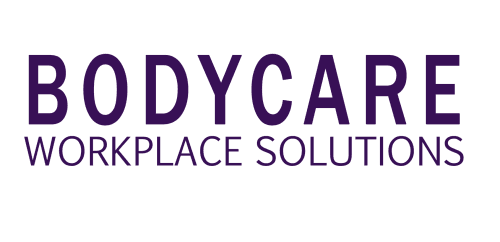Hire right! 5 tips for finding good employees

Whether you’re part of a big company or a start-up, nobody can afford the high price of poor performers – literally. A conservative figure puts bad hiring at “well over $100 million.”[1]
Mistakenly hiring the wrong people costs your business money in more ways than just dollars outlaid on recruiters or advertising. In addition to the recruitment process, there’s the ongoing training, salary and benefits, workplace equipment, and other resources, such as time dedicated towards moulding your new employee to be the ‘right business fit.’ All these expenses can quickly add up. And it’s only around the five month mark that companies can expect a new recruit to reach full productivity.[2] So when you’ve spent numerous hours and invested countless resources, only to realise a new recruit is not right for the role due to under-performance or lack of skills, it can feel quite frustrating for everyone involved.
Assessing candidates for a role can be tough – if you don’t ask the right questions and fully assess their skills, you won’t know whether you’ve made the right decision until the day they start.
Your employees are an investment and that’s why it’s so important to get it right from the beginning. We’ve all heard the adage “looking good on paper,” and unfortunately, bad hires are a perfect personification of this saying. Most of the time, these types of applicants aren’t easy to spot.
Fortunately, hiring good employees is easier than you think once you know what to do. Here’s five ways to turn the hiring process from feeling like a high-stakes gamble into a sure thing:
1. Clearly outline the position you are trying to fill
Before you begin looking for employees to hire, it’s a good idea to have a clear understanding of the role that you are looking to fill. Traditionally in many organisations, a position description is prepared which clearly outlines the requirements of the role and the necessary skills that the potential new employee should have to be considered for the position.
So ask yourself this: if you are looking to hire someone to perform a role where the individual will be required to perform physical tasks, do you have a position description that outlines the inherent physical requirements of this role? If the answer is no, then you should consider creating a comprehensive Job Dictionary that clearly outlines the inherent physical requirements of the role that you are looking to fill. This gives you and the candidate a clear picture of the physical demands and tasks they will be required to fulfil as part of their new role.
Take away: If you don’t have an accurate and up to date position description for the more physical roles in the organisation, a job task analysis or job dictionary, then it’s important to get these right before you start looking for your new recruit.
2. Complete background checks
A background check is still one of the most accurate ways to find a good hire. At its most basic level, a background check is used to determine whether the information provided by a candidate is accurate. Following up on their references is also one of the best ways to hire employees, as it can provide great insight into personal characteristics that may be key to the success of the individual within your organisation. It can also ensure the integrity of your business, as someone with a criminal history may not be suited to a security guard role.
Take away: If your organisation currently performs background checks, great work! This is a big step towards getting the right people into your organisation. If your organisation doesn’t perform mandatory background checks, that’s ok, but make sure you take the time to call all references provided by the candidate. We are all busy but by taking the time now , you will save yourself significant time and money.
3. Tailor your pre-employment screening
We can’t stress enough how important it is to screen your employees before hiring them, particularly if their job is one that requires physical activity. Screening potential employees before they are hired will allow your business to identify and manage any existing health issues and identify any shortfalls in knowledge or skills that may need to be addressed through training and education.
It’s no good hiring someone to move heavy boxes if they can’t lift over 20kg, nor is it worth hiring someone as a lumberjack if they cannot handle hard labour, heavy machinery, and lifting. Likewise, it’s not worth hiring someone to fulfil an accounting or IT role if they don’t have the necessary skills to do so.
Take away: If the role that you are looking to fill is physical in nature, then a functional movement pre- employment assessment or screen should be undertaken prior to employment. If you are looking to fill less physical roles, then other skills based testing should be considered.
4. Align culture and values
Seek employees who will fit into your company culture and act in line with your company values. This means people who are genuinely invested in your company mission, and have specifically chosen to work at your company because of this. Having a supportive work environment populated by peers who share their passion will allow employees to put their best work forward and thrive within the organisation. You can achieve this by having a very clear mission statement, making sure any potential hires are well aware of that mission, and reacting positively to it.
Take away: Personality and cultural fit are just as important as the skills the individual will bring to the organisation!
5. Maintain a positive and engaged workforce
Disengagement is contagious – and just as one bad apple can spoil the whole bunch, a negative employee in your midst affect the rest of your team. Negativity impacts productivity and the bottom line, so it’s important to find employees that are motivated and engaged. However, it’s also your role to ensure your team continues to stay positive. One of the simplest ways in which you can maintain an engaged and healthy workforce is by implementing ongoing health and wellbeing initiatives. Whether it’s encouraging walking meetings, providing regular training and professional development opportunities or implementing targeted workplace specific programs such as workplace mental health and wellbeing programs, it’s important to find a way to engage your employees.
Take away: Find what works for your organisation and run with it. Start small, try different things, there is no magic solution.
Is your business hiring now? We hope our tips will assist you in finding and recruiting the ‘perfect match’ for your business. Good luck!
If you are looking for a tailored, comprehensive pre employment solution, Bodycare offers a number of pre employment screening services that can support your business during the hiring process to ensure your future employees are fit for duty, including tailored online questionnaires, musculoskeletal screens, Epworth sleepiness assessments, drug and alcohol tests, vision and hearing tests, the K10 psychological assessment, and more.
[1] https://www.forbes.com/sites/falonfatemi/2016/09/28/the-true- cost-of- a-bad- hire-its- more-than-you- think/#2153cc04aa41
[2] http://www.investopedia.com/financial-edge/0711/the- cost-of-hiring- a-new-employee.aspx#ixzz4uVoAXago


